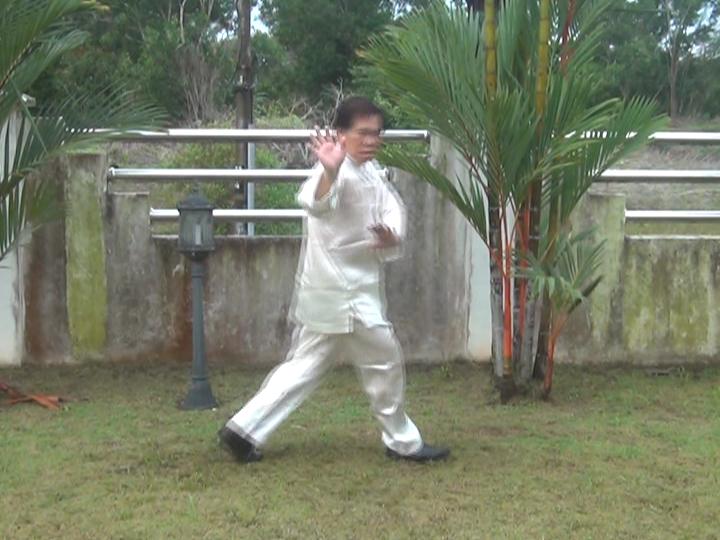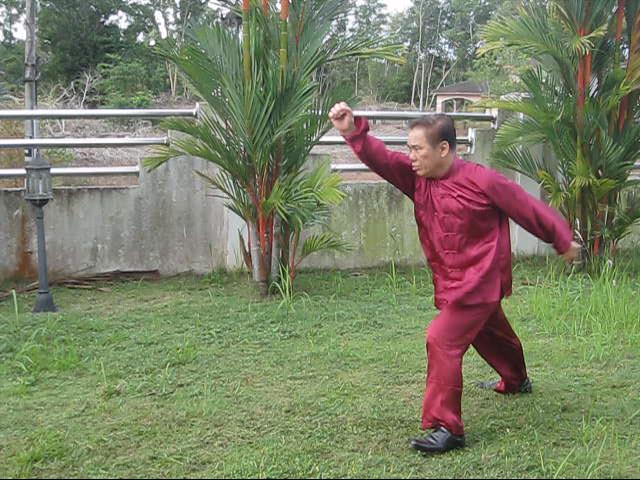BAGUAZHANG AND CHOY-LI-FATT

Baguazhang
Question
How does Ba Gua Zhang compare to an art like Choy Lee Fut in terms of fighting multiple opponents? To me it seems like one distinction I can tell is that Ba Gua Zhang uses more of a mix of short and wide stances, whereas Choy Lee Fut focuses more on long range?
Sonwukong
Answer
Both Baguazhang and Choy-Li-Fatt are effective arts to fight against multiple opponents. But their approaches and techniques are quite different. It is interesting and educational to compare them, which will enrich ones understanding and performance of combat even if he does not practice Baguazhang or Choy-Li-Fatt.
Comparatively Choy-Li-Fatt has longer range than Baguazhang. This does not mean that Baguazhang does not have long range techniques, besides middle-range and short-range. It is a matter of comparison. Choy-Li-Fatt stances are longer, and the hand techniques also reach further. But Choy-Li-Fatt also has middle-range and short-range techniques. Both Choy-Li-Fatt and Baguazhang are complete arts.
Choy-Li-Fatt is also harder than Baguazhang. Except for Choy-Li-Fatt masters who have progressed from external to internal, Choy-Li-Fat is an external art, whereas Baguazhang is internal. Presuming all other things being equal, an external art is more threatening than an internal art in combat, and therefore more suitable for fighting against multiple opponents.
Choy-Li-Fatt makes full use of these features in multiple fighting. In fact, the development was the other way round. Choy-Li-Fatt was used by Chinese patriots as well as in the Chinese Republican Army for multiple fighting against the Qing Army, and it was very effective. These features evolved in Choy-Li-Fatt from actual fighting experience.
A Choy-Li-Fatt exponent would use these features to move into multiple opponents. By swinging his powerful arms systematically, opponents would be hit or move away. Those who are hit would have their head or body smashed or bones broken. Those who try to block the powerful swinging arms would have their defending arms broken too.
As opponents retreat, the Choy-Li-Fatt practitioner would move into them ferociously. This is an excellent strategy when the Choy-Li-Fatt exponent is good and the multiple opponents mediocre.
Baguazhang works on different principles. While Choy-Li-Fatt bases on powerful long-range swinging attacks, Baguazhang bases on agility. Baguazhang stances are short, and will be unsuitable for techniques used in Choy-Li-Fatt. But the short stances are effective in getting behind opponents.
A Bguazhang exponent would weave amongst multiple opponents and strike them down from their side or back. He must be constantly on the move. If he stops at one position he will give an opportunity for his multiple opponents to move in on him and attack him at the same time.
But if he is constantly on move, he can fight with one opponent at one time though there may be many opponents around him. Because he is agile and his movements uncertain for the multiple opponents, they would not know where and when to attack simultaneously.
If other factors were equal and the multiple opponents are not skillful, which is usually the case or else they would not need to attack a single person in a group, Choy-Li-Fatt is more effective in multiple combat. If it is a one-to-one combat at masters’ level, Bagauzhang has an advantage over Choy-Li-Fatt.
Even when the Choy-Li-Fatt exponent is powerful, it is quite easy for the Baguazhang exponent to penetrate his swinging attacks and get to his back to strike him. But if the Choy-Li-Fatt exponent is more skillful, he can surprise the Baguazhang exponent with appropriate counters when the latter makes his penetrating moves, or even when he has got to the Choy-Li-Fatt exponent’s back.
Kungfu is not only effective. It is interesting like playing chess.

Choy-Li-Fatt
The questions and answers are reproduced from the thread 10 Questions to Grandmaster Wong -- Baguazhang (Pakua Kungfu) in the Shaolin Wahnam Discussion Forum.
LINKS
